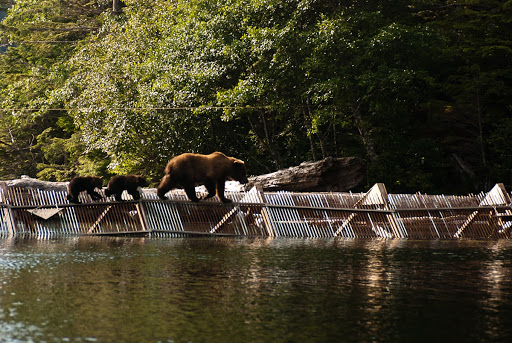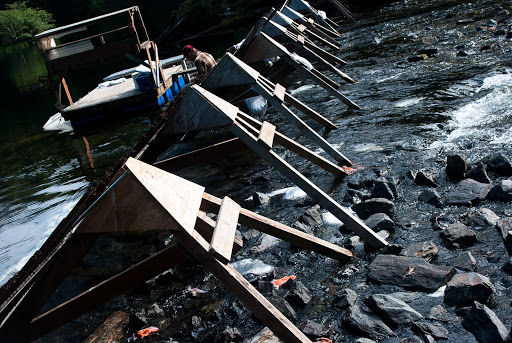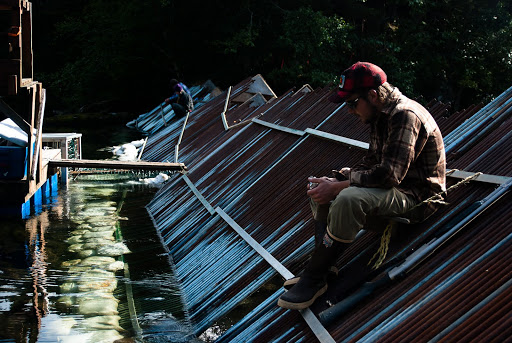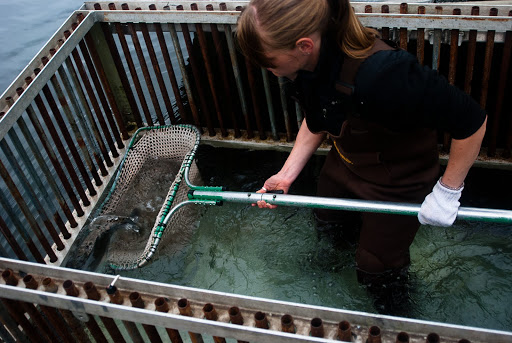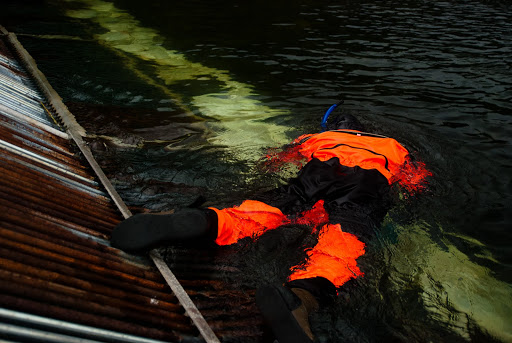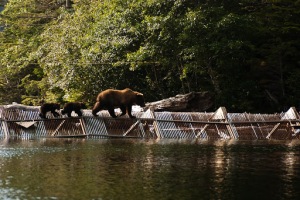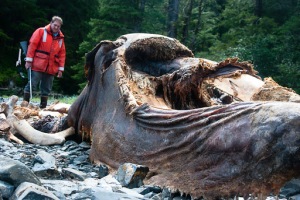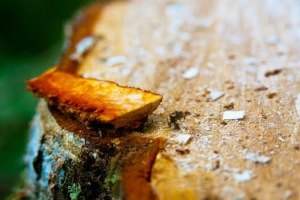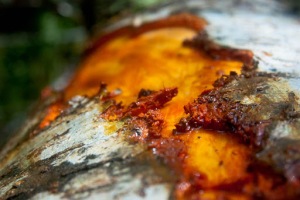Roly poly fish eyes
Warning: If you are squeamish about slimy insides of fish, don’t read this post!
Well, that’s not true. I did catch something that felt like the mother of all halibut, or possibly a nuclear submarine, but eventually I cut the line because we all concluded it was actually the bottom. Dangit.
When we got back, the fellow we rented the kayaks from was there with his wife and 5 year old son. We got to chatting, and the son, like any good Alaskan child, wanted to see the fish. So we showed them to him, of course, and had a chat about fish he has caught – three herring this spring, apparently.
Then it turned out that, actually, what he was most interested in was the fish eyes. He was poking at them with his fingers, and he wanted them.
My compatriots began to edge away and become very engrossed in the conversation with his parents, so I took a knife and helped him extract the eyes from a rockfish and a halibut. He stuck his fingers right in there until it was loosened up and then I cut through the nerve cord holding it in. I also cut through a membrane layer that covered the whole eye – fish may not have eyelids, but their eyes are covered and secure, not so ready to pop out as ours are.
One of the rockfish eyeballs we sliced open so he could remove a particular small nodule of something hard inside. I’m not real up on my eyeball anatomy, so I couldn’t say exactly what it was, but it was also round, and he regarded it as the true ball of the eye.
His mother fetched a plastic bag for the eyes, and explained that they already have some salmon eyes at home in the freezer, and these will join them.
We actually did an interview with the dad a few weeks ago, and he told us
I love watching my kid play with salmon. He’s fascinated by salmon – he’ll even pick up the dead ones. Pick them apart and try to see what they’re made of and what’s inside of them, what’s in the gut and what they’ve been eating. You know I didn’t teach him that but he’s just fascinated with the whole thing and the fact that they’re half rotten doesn’t bother him at all.
I’ve been thinking about it for the last day or two. Is a fascination with fish an integral part of being a kid in a fishing community, or does it point to some sort of scientific leaning?
I believe both theories are probably true – given the right circumstances most kids are very interested in how things around them work, and circumstances in Alaska provide a lot of fish as part of the things around you. Earlier this summer I worked an art booth at a kid’s fishing derby. We had a bunch of silicone casts of fish that kids could slather paint on and then slap onto paper to make fish prints. Most of the kids over 4 could identify most of the fish species. I also had a conversation two weeks ago with a ten year old boy about pink salmon returns and fishing tactics. He was more on top of it than me.
I know that my sister and I probably spent a fair amount of time dissecting fish as children. I certainly remember watching my dad gut fish, and we also used to check inside the stomach to see what they’d been eating. In high school, I spent a few summers working in a cannery. We didn’t actually put salmon in cans, but I spent 10-15 hour days with salmon guts, sorting the eggs, or roe, from the other slimy bits. (And yes, I got permeated with salmon, myself. If you ever take such a job, pick one set of clothes to wear to work every day, and throw them out at the end of the season.)
Salmon hearts have little valves on them that look like teeth, human molars, the type that you see on posters about dental hygiene. The intestines make a stringy mass like a mop, or seaweed. And the eggs, glistening inside a membrane sac, are gorgeous. The prettiest are chum salmon eggs, which are globular, orange, opalescent. They are full of fats and nutrients, of course, to feed the next generation of salmon, and maybe it is the oils that makes them so lovely, like bath beads or tiny glass marbles.
I realize it’s a very odd thing to wax nostalgic about, fish eggs, but my point is that I learned to appreciate the internal beauty of the fish, and I didn’t stop checking out their insides when I grew up.
When I was a kayak guide we occasionally found fish. Once I dissected a good sized sculpin with a family who had two boys age 8 and 10 or so. It had two little rock crabs in its stomach, and was definitely the highlight of their day. Another time I had an adult guest who came back down to the dock after the trip to watch me hack open the head of a pacific cod we had found (it was missing its tail and was probably discarded by a seal). We found the tiny brain inside, which resembled nothing more than a loogie, and the ear bones, called otoliths.
All of which is to say that I didn’t mind cutting up fish eyes at all. It was pretty fun. I haven’t paid for renting the kayak yet and I got an email from the little boy’s dad that if I don’t pay, he’s going to send me a bag of frozen fish eyes. I’m going to pay him today, but not because I’m afraid of fish eyes!
Edit/update: here’s a picture of the eyeless fish. Just because!

